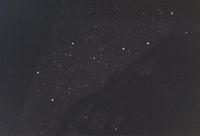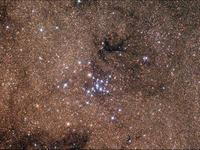 Some assume that during the winter the sun is farther away, and in the summer it’s closer. But that has very little impact on the seasons. The Earth’s orbit is only slightly elliptical. It varies from about 92 to 94 million miles away from the sun.
Some assume that during the winter the sun is farther away, and in the summer it’s closer. But that has very little impact on the seasons. The Earth’s orbit is only slightly elliptical. It varies from about 92 to 94 million miles away from the sun.This tilt of ours creates a wide temperate zone where we get four distinct seasons: Winter, Spring, Summer, and Fall. A larger tilt would create a harsher difference between a cold winter and a hot summer. A smaller tilt, or no tilt, would pretty well eliminate the seasons. If, however, the planet had a large elliptical orbit, then that would create seasons that would affect the whole planet at the same time in the planet’s year.
The planets in the solar system vary considerably in tilted-ness. Mercury isn’t tilted at all, while Uranus is at 82 degrees (almost lying on its side), and Mars is very similar to Earth at 25 degrees.
So a fantasy world could really have any tilt you’d like, and an eccentricity (a measure of elliptical-ness) greater than Earth’s. The more tilt you give it, the more extreme the temperatures are going to be. If you had a planetary tilt like Uranus’s, then for half the year you wouldn’t see the sun at all. It would be a very cold, very long, night. Then the sun would start to peek on the horizon, making little circles in the sky. As the year wore on, the sun’s little circle would get higher and higher in the sky, and then finally set on the opposite horizon. The summer would be one long, very hot, day. Such extremes would beg the question of how plants and animals would survive. Presumably, life would find a way.
The tilt of a planet slowly rotates about itself like a tilted top… very slowly. It is called the Precession of the Equinoxes, and for Earth, the loop takes 26 thousand years. This moves the seasons slowly backward in the calendar year.
All of this can play heavily in your fantasy world building. From the tilt of the planet and the eccentricity of its orbit you can have massive winters and unrelenting summers, or mild, practically non-exist seasons.
And as for the philosophical and religious implications of a tilted planet, just look at how the Mayan’s viewed it all.
Related to tilt, we have spin. A planet spins (rotates) on its axis as it orbits the sun. The rotation, over time, will slow down. The Earth’s spin is currently at about 365 spins per orbit, giving us our 365-day year. A planet could spin faster, or slower. If it slows down completely then it will rotate exactly once per year, meaning one side (the heavier, or denser side) will face the sun, while the opposite side is forever in the dark.
This allows your fantasy world to have very short days, or very long ones. A planet can even spin in the opposite direction to Earth’s, meaning the sun would rise in the West and set in the East. (Of course, if the denizens of your fantasy world know nothing of Earth, then ‘opposite’ of it means nothing. The sun merely rises and sets.)




